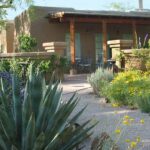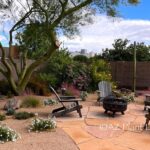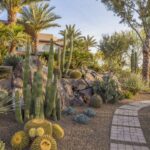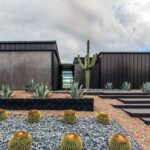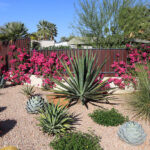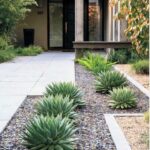Desert landscaping is a popular and sustainable way to create a beautiful outdoor space in areas with limited water resources. By utilizing native plants and efficient irrigation techniques, homeowners can enjoy a lush and vibrant landscape that thrives in the arid climate.
One of the key components of desert landscaping is selecting plants that are well adapted to the dry conditions of the desert. Native plants such as succulents, cacti, and desert shrubs are perfect choices for a desert garden. These plants have evolved to survive in harsh desert environments, making them low-maintenance and drought-tolerant options for landscaping.
In addition to selecting the right plants, proper irrigation is crucial for maintaining a healthy and thriving desert landscape. Drip irrigation systems are highly recommended for desert gardens, as they deliver water directly to the roots of plants, minimizing water waste and evaporation. Mulching around plants can also help retain moisture in the soil and reduce the need for frequent watering.
To enhance the visual appeal of a desert landscape, homeowners can incorporate decorative elements such as rocks, gravel, and boulders. These features can add texture, dimension, and contrast to the garden, creating a visually striking and unique outdoor space. Additionally, pathways, seating areas, and outdoor lighting can further enhance the functionality and aesthetics of a desert garden.
Maintaining a desert landscape requires regular upkeep and care, including pruning, weeding, and fertilizing as needed. It is important to monitor the health of plants and address any issues promptly to prevent pests, diseases, or other problems from spreading throughout the garden. By staying on top of maintenance tasks, homeowners can ensure that their desert landscape remains healthy and vibrant year-round.
Overall, desert landscaping is a sustainable and environmentally friendly way to create a beautiful outdoor space in dry climates. By selecting the right plants, implementing efficient irrigation techniques, and incorporating design elements that complement the natural surroundings, homeowners can enjoy a low-maintenance and visually appealing desert garden that thrives in the arid environment.

